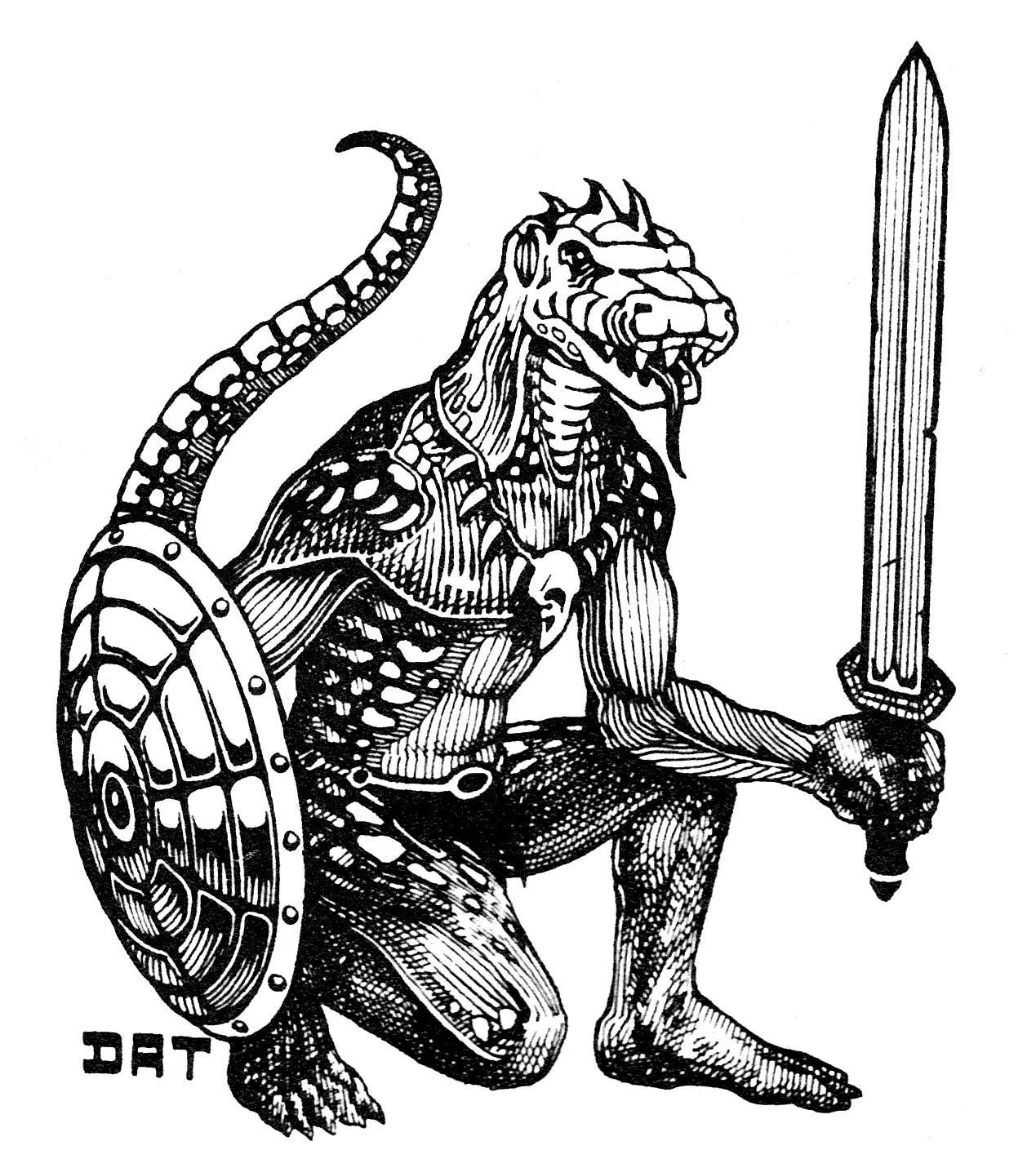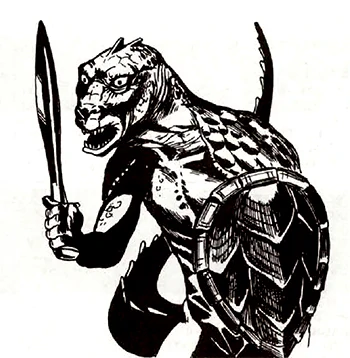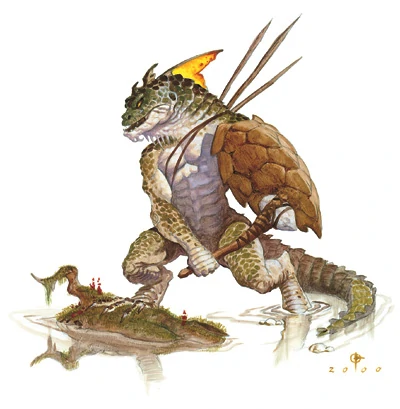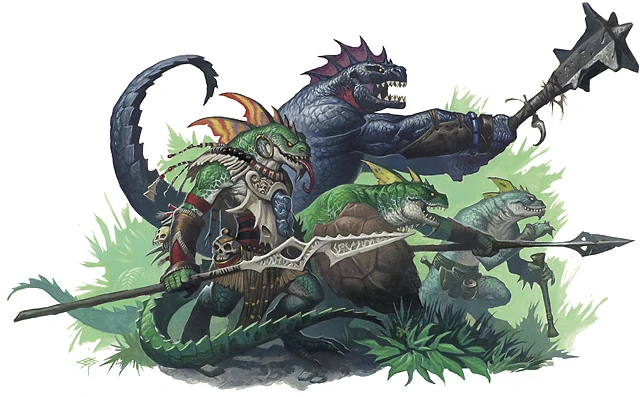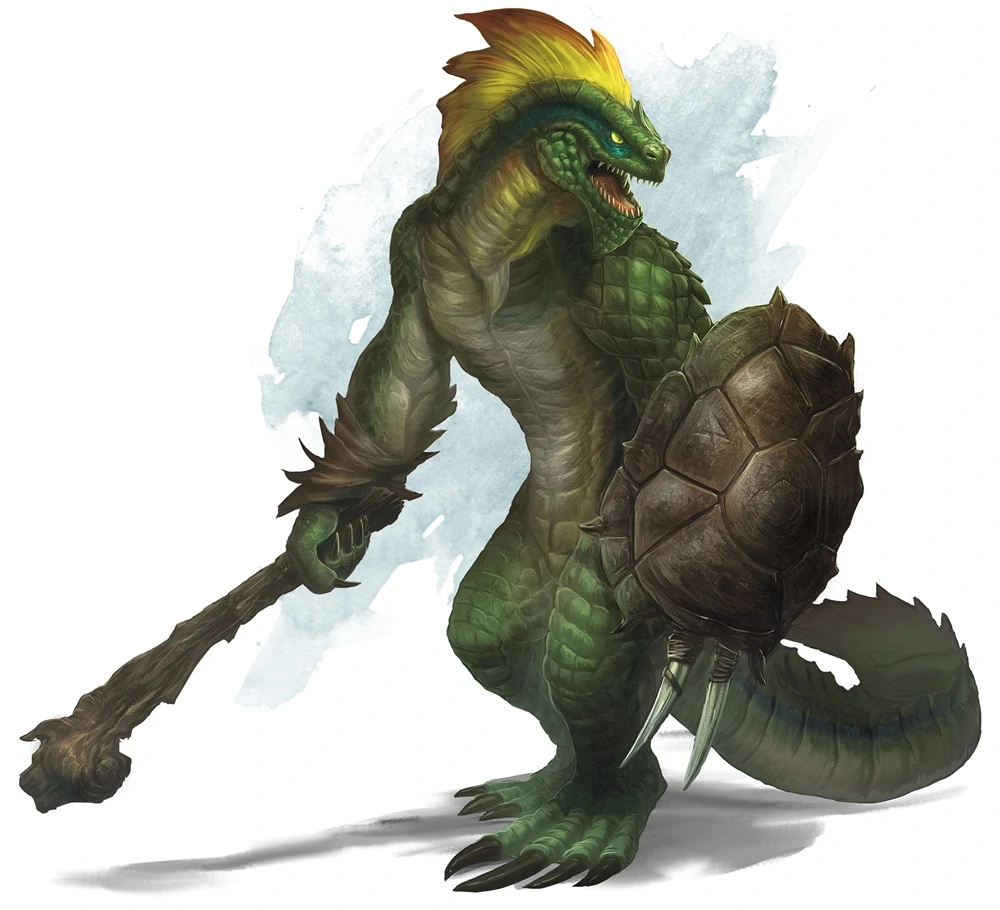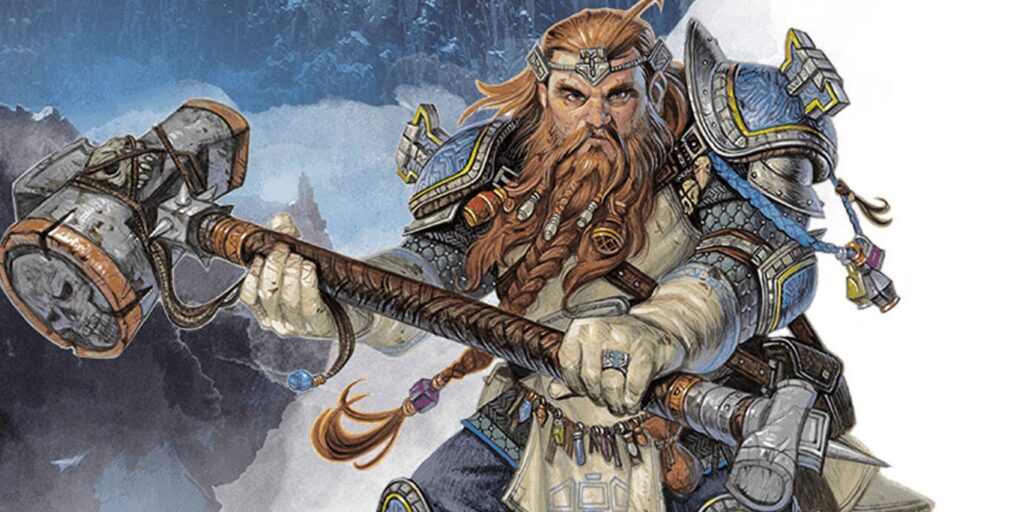D&D Monster Spotlight: Lizardfolk are Our Kind of Folk
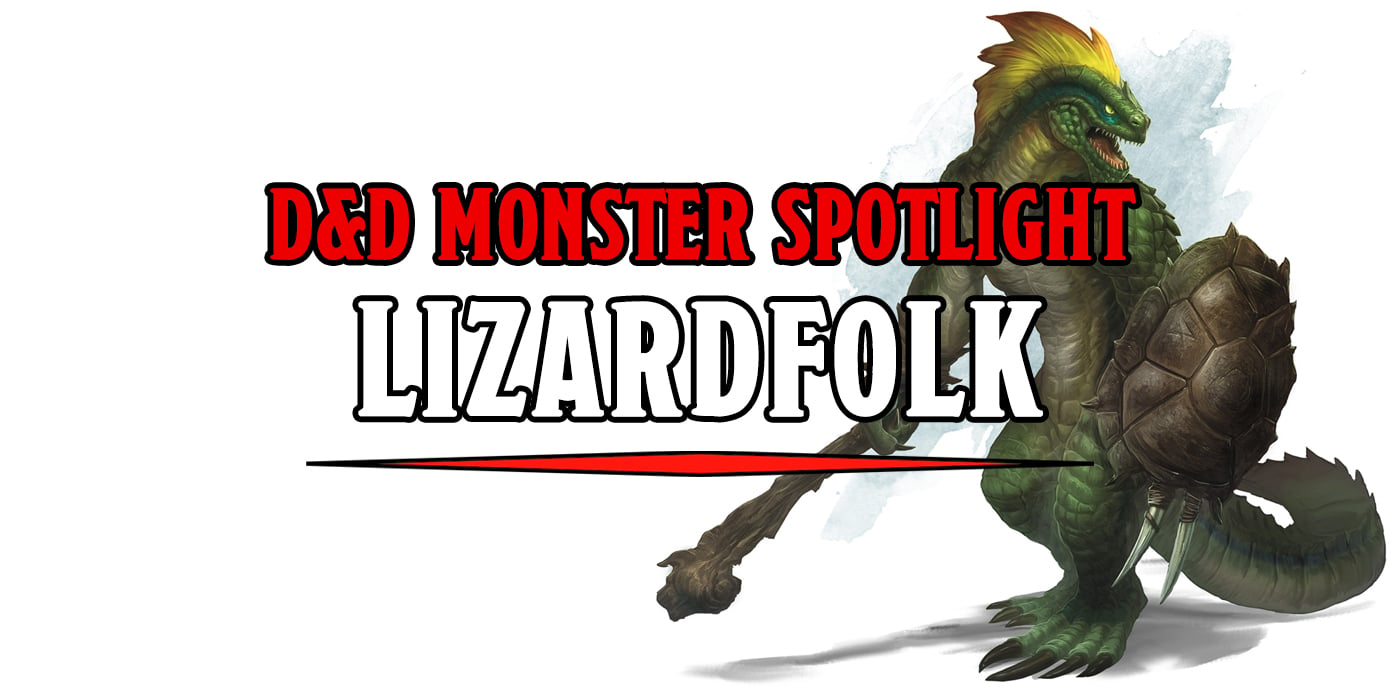
Mean, vicious, and not particularly fussy in who they eat, Lizardfolk don’t seem like they’d be good company. But you can play as one.
Lizardfolk have been a part of D&D since the beginning. These simple and straightforward additions to the Monster Manual don’t seem like they’d be popular. But enough people love them that they are a playable race. So if you’re looking for a cold, mean, character who may or may not periodically dream of eating their humanoid traveling companions, Lizardfolk may be the character for you.
First Edition
Back in First Edition Lizardfolk were known as the “Lizard Man.” Which is a pretty common minor change in naming convention through the editions (also see Merfolk). These semi-aquatic creatures could be found in swamps, marshes, and caves. Though their dwellings are often completely submerged, they breathe air and prefer hunting the dry-land-inhabiting human more than any other potential food. Their attack of choice is primarily done at a distance, hurling barbed darts and javelins at enemies before closing the distance. Once up close, the more advanced Lizardman/folk uses a club.
Second Edition
2E Lizardfolk are savage, hostile scavengers. Their fighting style is somewhat disorganized, attacking as individuals as opposed to as a united front. But this means that a group of ferocious lizards may attack your party in a massive seemingly random assault that is virtually impossible to strategize against. More advanced Lizardfolk will use snares and sudden ambushes and may even take prisoners. And in addition to being mean, vicious, and unfriendly, the Lizardfolk egg isn’t even edible.
Third Edition
Technically, Lizardfolk are omnivores. This is really to say that they can eat anything when push comes to shove and they just need to get some calories. Their preferred food is humanoid flesh and they’re not particularly picky about where it comes from or who is currently still using it. Being semi-aquatic monsters, they can hold their breath for a number of rounds equal to four times their constitution modifier and have bonuses to Jump, Swim, And Balance checks. Though their attacks are usually disjointed and disorganized, they do live in a society with a recognizable hierarchy. Sometimes their leaders (who are often barbarians, clerics, and druids) will even trade goods with other intelligent creatures.
Fourth Edition
The Lizardfolk of 4E seem somehow more reasonable. Here they are described as feeding on local wildlife and only the “especially cruel and savage Lizardfolk” hunt and eat humanoid creatures. And since this is Fourth Edition, there are man-reptilian varieties for your DM to choose from. Greenscale Darters are known to hide in the undergrowth and attack with their blowguns and stealth skills. Greenscale Marsh Mystics use magic to create difficult terrain and immobilize their enemies. And finally, Blackscale Bruisers use their great club to push back and pulverize their foes.
Fifth Edition
Fifth Edition takes a little bit of every edition and makes a pretty well-rounded character of the Lizardfolk. They are either neutral or chaotic evil creatures with a taste for humanoid flesh. But they’re open to trading if need be and respect the boundaries of their hunting ground. They have also been known to craft weapons, shields, and even jewelry out of the bones and hides of their prey. 5E also has multiple varieties of Lizardfolk with the classic Shaman, and King/Queen. Lizardfolk Shamen are only a little tougher than their standard brethren, but the King/Queen lizards have more than three times as many hit points and slightly more powerful attacks.
Have you encountered any Lizardfolk in your D&D adventure? Do you have a player-character lizard in your party? Which edition of Lizardfolk is your favorite? Let us know in the comments!
Happy Adventuring!

